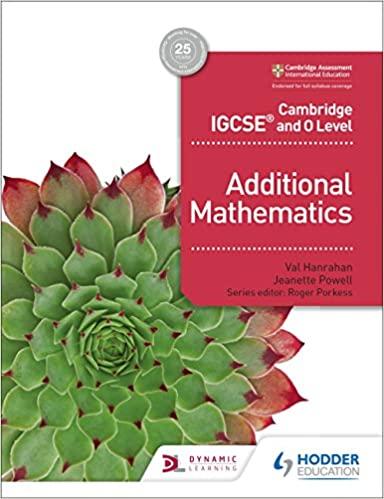Question
excel link: https://docs.google.com/spreadsheets/d/19IkCyJE99kxGMt9qUI9X-EdGuG9GhJDr/edit?usp=sharing&ouid=113068968791942309329&rtpof=true&sd=true 1. Financial analysts specializing in credit markets are often interested in creating models to predict whether a firm will go bankrupt within
excel link:
https://docs.google.com/spreadsheets/d/19IkCyJE99kxGMt9qUI9X-EdGuG9GhJDr/edit?usp=sharing&ouid=113068968791942309329&rtpof=true&sd=true
1. Financial analysts specializing in credit markets are often interested in creating models to predict whether a firm will go bankrupt within some fixed period of time. If there is a good chance that a particular firm will go bankrupt, then the firm will have to pay a very high interest rate on any debt (bonds) that it may issue.
In practice, statistical models to predict bankruptcy are fairly difficult to construct. One of the variables that may be useful in distinguishing between firms that go bankrupt and firms that stay solvent is the return on assets (ROA). The accompanying file Bankruptcy.xlsxcontains financial data for a sample of 44 firms. Of these 44 firms, 20 firms went bankrupt within 1 year after the data were collected; the other 24 firms remained solvent after 1 year. For this assignment, ignore all financial measures other than ROA.
For the purpose of this exercise we will assume that firms' ROA is, in general, normally distributed.
a. Using R, calculate the mean and standard deviation for ROA
b. Using R, calculate the mean and standard deviation for ROA of firms that remained solvent
c. Using R, calculate the mean and standard deviation for ROA of firms that went bankrupt within 1 year.
d. Construct a 90% confidence interval for the average ROA of firms that remained solvent. State the confidence interval in the two forms: point estimate margin of error and [lower limit, upper limit]. Interpret the confidence interval within the context of the problem.
e. Construct a 90% confidence interval for the average ROA of firms that went bankrupt. State the confidence interval in the two forms: point estimate margin of error and [lower limit, upper limit]. Interpret the confidence interval within the context of the problem.
2. Scarlett and Heather, the owners of an upscale restaurant in Dayton, Ohio, want to study the dining characteristics of their customers. They decided to focus on two variables: the amount of money spent by customers and whether customers order dessert. The results from a sample of 60 customers are as follows:
Amount spent: X=$23, s=$3.50
Twelve customers purchased dessert.
a. Construct a 90% confidence interval estimate for the population mean amount spent per customer in the restaurant. Provide the step calculations and commands used in R. State the confidence interval in the two forms: point estimate margin of errorand [lower limit, upper limit].
b. Construct a 95% confidence interval estimate for the population proportion of customers who purchase dessert. Provide the step calculations and commands used in R. State the confidence interval in the two forms: point estimate margin of errorand [lower limit, upper limit].
Jeanine, the owner of a competing restaurant, wants to conduct a similar survey in her restaurant. Jeanine does not have access to the information that Scarlett and Heather have obtained from the survey they conducted. Answer the following questions:
c. What sample size is needed to have 95% confidence of estimating the population mean amount spent in her restaurant to within $1.00, assuming that the standard deviation is estimated to be $4? For by hand calculations, use R to compute the z-multiple. Provide the step calculations and commands used in R.
d. How many customers need to be selected to have 99% confidence of estimating the population proportion of customers who purchase dessert to within 0.04? For by hand calculations, use R to compute the z-multiple. Provide the step calculations and commands used in R.
e. Based on your answers to (c) and (d), how large of a sample should Jeanine take?
Step by Step Solution
There are 3 Steps involved in it
Step: 1

Get Instant Access to Expert-Tailored Solutions
See step-by-step solutions with expert insights and AI powered tools for academic success
Step: 2

Step: 3

Ace Your Homework with AI
Get the answers you need in no time with our AI-driven, step-by-step assistance
Get Started


